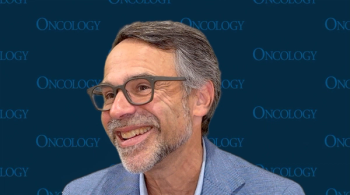
Implementing Cancer Rehabilitation to Improve Quality of Life
Jessica Cheng, MD, noted that working with patients in the field of cancer rehabilitation to improve recovery times brings her joy.
As a newer field of study, cancer rehabilitation may not be easily discernable as to what type of care is provided. However, Jessica Cheng, MD, is determined to shed light on this new specialty and how it can help improve cancer outcomes.
Cheng, assistant clinical professor in the Department of Supportive Care Medicine at City of Hope, focuses on 3 aspects: before, during, and after treatment. The field of cancer rehabilitation was created to help patients improve their quality of life no matter what stage they are in.
Through creating exercise plans and helping with pain derived from various therapies, Cheng and her team are dedicated to helping patients get back to living the life they knew prior to a cancer diagnosis.
Transcript:
A lot of times when [patients have] cancer, they have thoughts like, “Will I be able to go back to work? Can I go to my son’s wedding? Can I keep golfing? My back hurts; it’s hard to get off a chair. How am I going to get through this?” What I do in my practice in cancer rehabilitation medicine is I then ask a lot more questions about where these thoughts are coming from. I do an extensive physical exam, and I come up with a comprehensive, tailored, practical, and coordinated plan that aims to give the patient a measure of control over their life, to live their life to the fullest no matter where they are in their cancer journey.
A key part of that in being able to function and do the activities that they want to do is exercise. There can be a lot of barriers to exercise. It could be that back pain, it could be fatigue related to cancer, neuropathy, or [something that makes them say] “Why do I have to do that?” I seek to answer all those questions with my patients. That’s one example of what a visit might look like. The part that I’m passionate about is cancer prehabilitation, and that’s preparing for surgery, stem cell transplant, or whichever cancer treatment is coming up next. I had a patient who recently followed up with me after prehabilitation, and she followed everything I said in terms of exercise, nutrition, mental health, etc. [She said she] got out of the hospital faster, and she recovered much faster than she thought. The oncologist confirmed that was a quicker recovery than expected. That brings me joy.
Newsletter
Stay up to date on recent advances in the multidisciplinary approach to cancer.

















































































